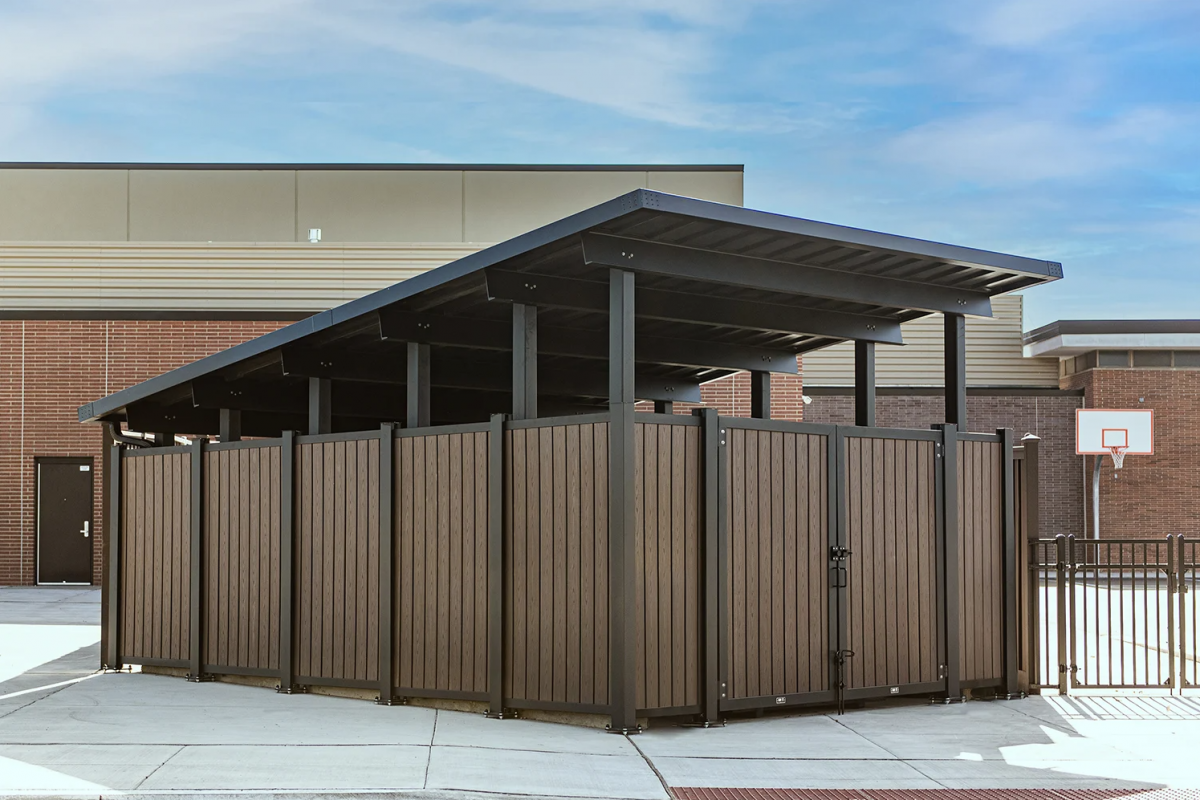Dumpster Management for Healthy Waterways

Almost every business generates waste and temporarily stores it on-site. Many businesses have dumpsters, compactors, and/or refuse containers to meet the need of their waste requirements. These containers are typically kept out of sight of the general public behind buildings or in alleyways. Due to this “out of sight, out of mind” mentality, especially related to waste receptacles serving businesses with active customers, it’s easy to overlook their potential to pollute local waterways.
If not properly operated and maintained, commercial refuse receptacles have the potential to be a significant source of stormwater pollution. Open dumpsters can collect rain water, creating a situation where polluted water is easily spilled or leaked when the container is emptied. Rainwater can also wash leaking materials, spills, and trash from refuse containers into storm drains. This runoff may contain grease, litter, chemicals, bacteria, and even pathogens. Wash water from cleaning dumpsters and/or compactors is another source of stormwater pollution.
Properly maintained dumpsters and their enclosures may prevent unsightly conditions and unpleasant odors, here are some helpful tips to best avoid a potential illicit discharge to the City’s public storm sewer system:
- If practical, keep dumpsters and compactors in a covered area. New construction in the City is encouraged to have a covered trash enclosure.
- Dumpsters should have a plug in the bottom to prevent leaks. Ensure plug is present and properly installed.
- Keep dumpster lids tightly closed to keep rainwater out and prevent leaks. Replace damaged or missing lids and plugs.
- Inspect dumpsters and compactors regularly for leaks (at least once a month).
- Inspect dumpster and compactor areas regularly for litter or stains (at least once a week).
- Grease bin lids should be kept closed and cleaned regularly.
- Replace leaking dumpsters and compactors as soon as possible (call your waste management contractor for a replacement).
- Avoid or minimize placing liquid waste, grease or leaky garbage bags in dumpsters. Place liquid waste in closed (or sealed) containers for disposal.
- Lock the dumpster or enclosure to prevent illegal disposal of hazardous materials.
- Install a spill kit in trash enclosure areas for quick cleanup of leaks and spills.
Report any spills which reach a catch basin to the Oregon Emergency Response Service (OERS) at (800) 452-0311 and the City’s Environmental Specialist, Jim Cartan, at (503) 570-1552.






